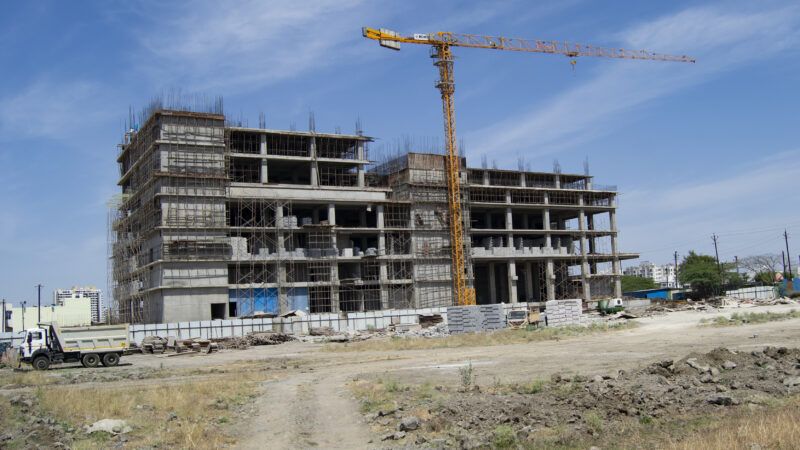It Took More Than 15 Years for a South Carolina Hospital To Get Permission To Be Built
In much the same way that zoning laws are wielded by NIMBYs to block new development, Certificate-of-Need laws can be used to impose costly delays on building new medical facilities.

Construction finally began in May on a new hospital in Fort Mill, South Carolina, more than a decade and a half after state regulators determined that the area was in need of more medical services.
Without that long delay, residents of the fast-growing Charlotte suburb would have one less thing to worry about during the COVID-19 pandemic. The coronavirus has strained the capacity of hospitals across the country, but especially in Southern states—at one point during the recent "delta wave," more than 85 percent of hospital beds in South Carolina were filled—and put a spotlight on the availability of medical care in America, which has fewer hospital beds per capita than most other developed nations.
What happened in Fort Mill offers an explanation for why that's the case.
Before being able to break ground on a new hospital there, Piedmont Medical Center had to navigate the state's Certificate-of-Need (CON) process, which in this case required going all the way to the state Supreme Court to fend off a legal challenge from a competitor. All that to build a 100-bed facility that the South Carolina Department of Health and Environmental Control had determined, all the way back in 2004, was indeed needed in the region.
Unfortunately, "need" is not enough in many cases. Like how zoning laws and mandatory environmental reviews might be well-intentioned policies but are frequently wielded by "not in my backyard" (NIMBY) activists as a way to tangle new development in costly piles of red tape, the CON laws on the books in many states can be used by existing hospitals to delay or prevent new facilities from opening.
That's exactly what happened in Fort Mill. A hospital chain based in Charlotte challenged Piedmont Medical Center's plans for a new facility, then sued to block the state's decision to give Piedmont permission to build the hospital. The litigation cost thousands of dollars and delayed construction by several years. Researchers at the Americans for Prosperity Foundation, a free market think tank, argue that even the threat of such lengthy, expensive reviews ends up deterring investments that would otherwise take place.
"Politics and legal challenges from competitors—not public need of quality health facilities and services—are the key drivers of the CON process in South Carolina," conclude Kevin Schmidt and Thomas Kimbrell in a recently published report looking at CON laws in four states.
Unfortunately, CON laws are on the books in more than 30 states. Though they differ somewhat from place to place, the outcomes are the same everywhere: higher prices, reduced supply of medical care, and regulatory barriers for anyone who wants to change that. In South Carolina, for example, the two researchers found that 25 percent of CON applications during a recent three-year period were denied or withdrawn after being submitted. Those applications represented more than $450 million of investment in the state that never occurred because regulators got in the way.
As the report notes, even the president of the South Carolina Hospital Association, which opposes the elimination of CON laws in the state, told the state legislature that the lengthy and expensive CON process "does not serve the community."
Artificially limiting the supply of health care services can be a major issue when a pandemic or other emergency strikes, of course, but CON laws harm public health even without the help of a novel coronavirus. States with CON laws have higher mortality rates for patients with pneumonia, heart failure, and heart attacks, according to research published in 2016 by the Mercatus Center, a free market think tank that argues for repealing CON laws. Other studies show that CON laws contribute to health care shortages in rural areas because they force medical providers to focus on wealthier, more populated areas in order to make up for the added costs imposed by the CON process.
Unfortunately, these laws persist because of a combination of cronyism and inertia. Originally passed as part of a misguided effort to curb health care costs, CON laws actually caused costs to rise by reducing the supply of health care facilities in many places. In the late 1980s, Congress reversed an earlier mandate requiring states to pass them. Since the mid-2010s, the Federal Trade Commission and Department of Justice have been more forceful in suggesting that states do away with them. "CON laws raise considerable competitive concerns and generally do not appear to have achieved their intended benefits for health care consumers," the two agencies concluded in 2016.
The only thing that takes longer than getting permission to build a hospital in a state with strict CON laws, it seems, is getting those laws off the books.


Show Comments (58)